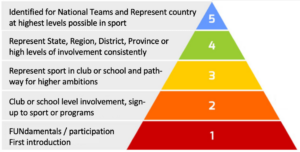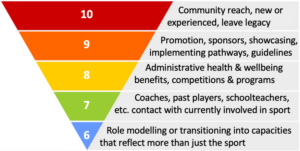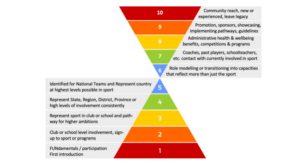This video is courtesy of Glazier Academies
In the 2-minute video, Frank DeLano delivers a powerful message taken from his full presentation “Everything They Don’t Tell You About Being a Coach” from Glazier’s Head Coach Academy.
Being put in the middle of difficult situations is seemingly a daily occurrence for coaches. There is no one answer or policy that is a guide to working through these tough calls, we can all benefit from having the mindset to examine all problems that deal with kids from as many sides as we can.
In this video, Coach Delano gives us his thoughts on dealing with the following scenario:
One of your athletes is an at-risk student who really needs to be a part of something that you can offer them. At times, those needs can conflict with what is best for the team.
Coach DeLano has won six state championships and definitely plays to win. As you will see in the video, he also has the heart to serve students.
My lesson from the video is that we need to look for a third alternative that helps the individual and that we are still able to do what is best for the team.
Click the play arrow to see the two-minute video.
Here are a few more of my takeaways from his entire presentation on Everything They Don’t Tell You About Bring a Coach:
- Dealing with everything they didn’t tell us is not in our job description. However, putting thought and concern into each individual challenge that you are faced with is what will allow us to achieve maximum impact for our athletes.
- Coaches must adopt a fireman-like mentality. Firemen train themselves to run toward fire to be able to put it out. Coaches need to have that same mindset when dealing with issues that affect their athletes and their program.
- No matter what is going on around us, as coaches we need to remain calm. More importantly than that, we need to help everyone else to remain calm.
- Try as we might, there will still be times when there is no resolution. When faced with that, we need to be the leader in the healing process.
- No matter how many people are around us during our workday, having to make decide what is the best course of action can lead to a feeling of being alone and lonely as a coach.
To close, I offer a thought that I heard from That Matta (former Ohio State and current Butler Men’s Coach) at a coaching clinic in 2001. That was when we were both “young coaches.” 🙂 I made it the number one priority for our program. He said, “I am very goal-oriented. The number one goal for our coaching staff is to establish a life-long relationship with our players that can never be broken.”
Helping coaches develop a way of thinking that can be applied to all the issues they face is the purpose of Glazier Academies. The curriculum provides coaches across all sports and at all levels with the preparation and tools to tackle the most challenging and important issues they face today.



